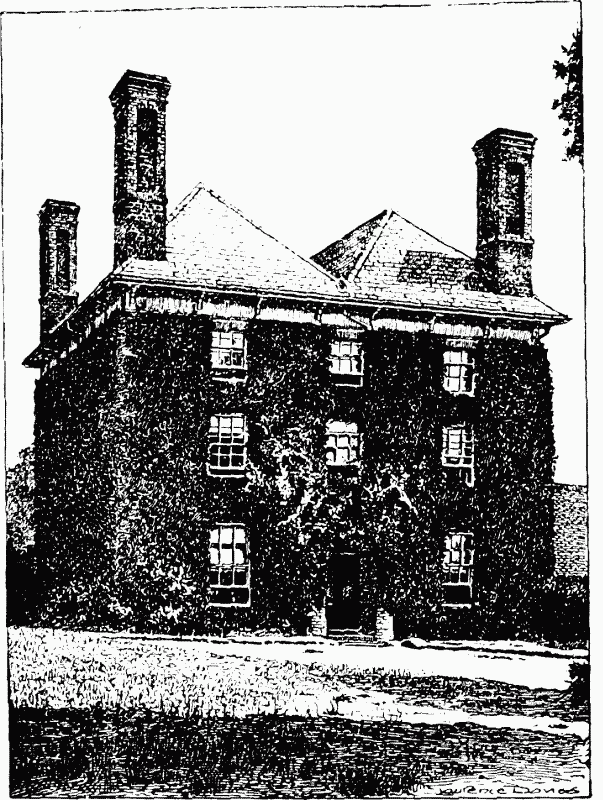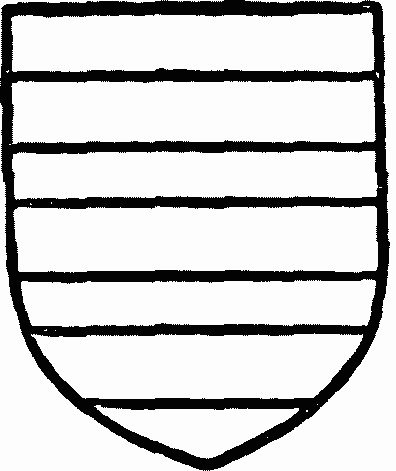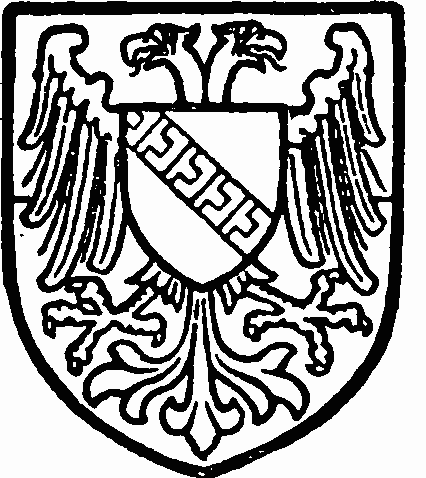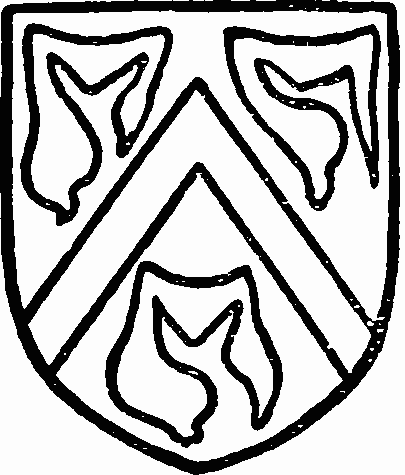A History of the County of Berkshire: Volume 4. Originally published by Victoria County History, London, 1924.
This free content was digitised by double rekeying. All rights reserved.
'Parishes: Pusey', in A History of the County of Berkshire: Volume 4, ed. William Page, P H Ditchfield (London, 1924), British History Online https://www.british-history.ac.uk/vch/berks/vol4/pp471-474 [accessed 30 April 2025].
'Parishes: Pusey', in A History of the County of Berkshire: Volume 4. Edited by William Page, P H Ditchfield (London, 1924), British History Online, accessed April 30, 2025, https://www.british-history.ac.uk/vch/berks/vol4/pp471-474.
"Parishes: Pusey". A History of the County of Berkshire: Volume 4. Ed. William Page, P H Ditchfield (London, 1924), British History Online. Web. 30 April 2025. https://www.british-history.ac.uk/vch/berks/vol4/pp471-474.
In this section
PUSEY
Peise, Pesei (xi cent.); Peseia (xii cent.); Pesey, Petsia (xiii cent.); Pewsey (xvi cent.).
Pusey is a small parish containing only 1,040 acres, of which two-thirds are arable land and the rest permanent grass and woods and plantations. (fn. 1)
The northern boundary of the parish is formed by the road from Faringdon to Abingdon. The village is situated in the centre of the parish at a height of about 260 ft. above the ordnance datum. Pusey House, which was built in 1753 from the designs of John Wood, architect, of Bath, is the property of Mr. Philip Bouverie-Pusey, the lord of the manor. It is at present occupied by Miss Anson, sister of the late Rt. Hon. Sir William Reynell Anson, bart., warden of All Souls' College, Oxford, and author of several legal and historical works, of which the best known is The Law and Custom of the Constitution. The house is a rectangular stone building, three stories high and having lower wings at the sides of two stories with octagonal projections towards the front. It has a very plain Renaissance elevation of the 18th century fronting north-west with a hipped slate roof and a Doric entrance doorway. It stands in a park containing some fine timber. Edward Bouverie Pusey, Regius Professor of Hebrew at Oxford and joint leader of the Oxford Movement, was born at this house on 22 August 1800. South-west of the house is a Greek circular temple, erected about 1759 to the memory of Elizabeth Pusey, wife of William Brotherton, and containing in the centre a statue of the lady.

Pusey House: North-west Front
In early times there were in this parish, side by side with the manor of Pusey, two estates called Bishop's Manor and Mansell's Court respectively, but all traces of these seem now to have disappeared. The soil is loam, while the subsoil is Corallian Beds. The chief crops are cereals and roots.
Manors
At the time of the Domesday Survey there were four distinct estates in PUSEY. The first, which had been held by Alvred of the Abbot of Abingdon in the time of Edward the Confessor, was held by Gilbert of the abbey; it was assessed at 2 hides, and was worth £3. (fn. 2) The second, of 6 hides, which formed part of the Bishop of Bayeux's fee, was in the possession of Roger de Ivrey, his predecessor in the reign of Edward the Confessor being Alvric. (fn. 3) The third was held by the foreign abbey of St. Pierre-sur-Dives of the king, (fn. 4) and the fourth, assessed at 2 hides, was held by Henry of Henry de Ferrers, Domnig having held it of Edward the Confessor. (fn. 5)
The first estate was afterwards called the manor of Pusey, and has been held by the Pusey family from time immemorial. There is a tradition that it was granted to the family by King Cnut, and an ancient ox-horn with a silver-gilt mounting of the 15th century bearing the inscription 'Kyng Knvude gave William Piuse thys horne to hold by thy londe' is still preserved, by which it is said to have been held (fn. 6); but it appears that the Pusey family first held this estate as tenants of the abbey of Abingdon. Gilbert was the name of the tenant in 1086, (fn. 7) and in the chronicle of Abingdon Gilbert is again given as holding 2 hides in Pusey of the abbey between 1066 and 1087. (fn. 8) In 1166 Henry de Pusey was holding Pusey of the old enfeoffment of the abbey, (fn. 9) and he is mentioned three times in the Testa de Nevill as holding a fee in Pusey of the barony of the Abbot of Abingdon. (fn. 10) In 1261 Geoffrey de Pusey granted land in Pusey to his son John, (fn. 11) and in 1272 Richard de Pusey granted lands and rents in Pusey and other places to his son Henry de Pusey for life. (fn. 12) Henry de Pusey was the holder of the estate in 1316, (fn. 13) and his nephew and namesake (fn. 14) was in possession in 1340, in which year he and others were accused of taking away cattle belonging to Humphrey de Bohun Earl of Hereford and Essex at Pusey and assaulting his servants. (fn. 15) In 1428 William Wattes alias Richard, who had apparently married the widow of a Pusey, was holding the half fee in Pusey formerly belonging to Richard de Pusey, (fn. 16) and is described in 1445 as 'William Richard of Pusey, yeoman.' (fn. 17) Ashmole, writing in 1719, describes a raised monument in the churchyard to Richard Pusey alias Peasey, Pescod or Pecote, who, 'having in his lyfetime received whole Christ, that is, not only as a prophet and priest, but as Lord and King too, in this true justifying faith dyed most comfortably 2 August, 1553.' (fn. 18) William Pusey died seised of lands in the parish in 1577, his heir being his son Hugh, (fn. 19) afterwards J.P. for Berkshire. (fn. 20) Hugh, together with his son Richard and his grandson Richard, dealt with the estate for the first time called 'the manor of Pusey' in 1647. (fn. 21) The date of his death is uncertain, but his son died in 1653 and his grandson in 1655. (fn. 22) Richard, the son and heir of the last-named, was aged fourteen on 18 March 1664–5. (fn. 23) The family became extinct in the male line in 1710 by the death of Charles Pusey, who bequeathed the manor to his nephew John Allen, directing that he should take the name of Pusey in addition to his own. (fn. 24) On the death of John Allen Pusey without issue his sister joined in settling the estate upon the Hon. Philip Bouverie, the nephew of his wife, who was the daughter of Sir William Bouverie, bart., and it was given up to him in the lifetime of Mrs. Jane Allen, the last survivor of the sisters, who died in 1789. (fn. 25) He assumed the surname of Pusey in 1784 and died in 1828, being succeeded by his son, the famous agriculturist and pamphleteer, Philip Pusey, (fn. 26) who took a prominent part in the formation of what became in 1840 the Royal Agricultural Society of England. He was a very good landlord, rebuilding the cottages for his labourers on the Pusey estate and providing them with allotments, and proved himself a very practical agriculturist in the management of his property. On his death in 1855 Disraeli declared him to be 'both by his lineage, his estate, his rare accomplishments and fine abilities, one of the most distinguished country gentlemen who ever sat in the House of Commons.' (fn. 27) His son and successor Mr. Sidney Edward Bouverie Bouverie-Pusey died in 1911, when the manor passed to Mr. Philip Bouverie-Pusey, nephew of the last owner and the present lord of the manor.

Pusey of Pusey. Gules three bars argent.

Bouverie. Party fessewise or and argent an eagle sable with two heads having on the breast a scutcheon gules with a bend vair.
The Domesday holding of Roger de Ivrey was what was afterwards called the manor of MANSELL'S COURT. The barony of Ivrey was granted to Guy de St. Valery by Henry I, and this estate was afterwards held of the honour of St. Valery. (fn. 28) When the honour escheated to the Crown in the reign of Henry III the overlordship of the manor remained with it, passing to Richard Earl of Cornwall by grant of Henry III, (fn. 29) and after him to his son Edmund, and on his death in 1300 to Edward I as his cousin and heir. (fn. 30)
A chartulary of Oseney Abbey throws much light upon the early history of the manor. From it it appears that Walkelin Waard or Wadard was the tenant about 1135–40, and his daughter Helewis brought it in marriage to William Avenell. (fn. 31) Their son Walkelin Hareng succeeded to the estate, and sold it, viz., 2 hides of land, manor-house and advowson, to Ralph de Cheney between 1179 and 1182. (fn. 32) Ralph de Cheney before 1193 gave the manor to Oseney Abbey, (fn. 33) which is returned by the Testa de Nevill as holding 3 carucates of land in Pusey. (fn. 34) Between 1205 and 1221, probably nearer the latter date, the abbey granted the manor for 60 marks to Roger de Kingston to hold at a rent of 10s. a year. (fn. 35) Roger de Kingston was dead by 1235, (fn. 36) and his widow Joan de Kingston, Henry Franck of Pusey, and Richard de Kakel were holding between them two-thirds of a fee in Pusey of the honour of St. Valery. (fn. 37) In 1275 Roger le Coumber and John de Limesey held 6 hides belonging to the St. Valery honour in Pusey, (fn. 38) but Nicholas Kingston and Margery his wife were holding the estate in 1297, (fn. 39) and three years later they exchanged it for the manor and advowson of Tortworth (co. Glouc.) with William Mansell and his wife Margaret. (fn. 40) It was from these new owners that the estate acquired the name of Mansell's Court. William Mansell was still holding in 1316. (fn. 41) In 1395 Philip Mansell of Gloucester was seised of Mansell's Place in Pusey. (fn. 42) Thomas Mansell owned property in the neighbourhood in 1467, (fn. 43) but it is uncertain whether it included Mansell's Court. John Fettiplace died seised of the manor of Mansell's Court in Pusey held of Wallingford Honour in 1510, and was succeeded by his son Philip. (fn. 44) Philip died in August 1546, and his son and heir Anthony a month later, so that the estate passed to Anthony's son Edward. (fn. 45) Edward died seised of the manor of Mansells in 1597, and was followed by his son and heir Thomas, (fn. 46) who died in 1612. (fn. 47) Thomas's heir was his sister Margaret, the widow of Christopher Fettiplace of Letcombe Regis, who had died in 1609. (fn. 48) In 1628 Edmund Fettiplace, the son and heir of Margaret and Christopher, (fn. 49) sold the manor to Samuel Dunch, (fn. 50) the third son of Sir Edmund Dunch of Little Wittenham. Samuel Dunch died in 1668, and his estates passed to his son John Dunch, M.P. for the county 1654–9, who married the daughter and co-heir of Richard Major of Hursley (co. Hants). (fn. 51) Their son Major Dunch was a Presbyterian, and obtained licence to hold service in his house at Pusey in 1672. (fn. 52) He was Sheriff of Berkshire in 1677 and died at Pusey in 1679. (fn. 53) His only son Wharton died without issue in 1705, and consequently his only daughter Jane, the wife of Francis Keck of Great Tew (co. Oxon.), became the sole heir of all his vast estates. (fn. 54) Francis Keck by will left his estates to Anthony Keck, probably his son. (fn. 55) From the latter they passed to his grandson and heir Anthony, who in 1749 sold the manors of Mansell's Court and Bishop's Manor to John Allen Pusey, (fn. 56) the owner of the main manor, with which from this time onward they have passed. (fn. 57)

Mansell. Argent a cheveron between three manches table.
BISHOP'S MANOR was probably in origin the estate owned by the abbey of St. Pierre-sur-Dives, at the time of the Domesday Survey, although it is unknown how it acquired its distinctive appellation. At the beginning of the 13th century 3½ carucates were said to be of the fee of the abbot in Pusey, (fn. 58) while John Geffrey seems to have been the owner in 1316. (fn. 59) Mary the wife of John Pope of London, chandler, quitclaimed half the manor of Pusey for 100 marks to Edmund Giffard in 1379. (fn. 60) In the next century it is found in possession of the Doget family. Henry Doget, gentleman, died in 1480, and with his wife Amice lies buried in Pusey Church. (fn. 61) He left several daughters, and some time afterwards there was a lawsuit as to the succession to 'the halfmanor called Bishop's Manor' between Clement Cotton, the son and heir of one of them, Juliane Cotton, and Amice the widow of Henry Doget, who was then the wife of Edmund Wyghthyll. (fn. 62) Apparently the judgement was in favour of Amice, for in the inquisition on the deaths of Philip and Anthony Fettiplace it is described as 'late belonging to Edmund Whitehilles, and Amice his wife in her right.' (fn. 63) The Fettiplaces were seised of it in 1546, and from this date onwards the history of Bishop's Manor is identical with that of Mansell's Court (q.v.).
Henry de Ferrer's estate in Pusey probably descended with his great manor of Stanford in the Vale (q.v.).
In 1244–5 Cecily, late wife of John Paternoster, held a virgate in Pusey of the king's gift by the service of saying each day five Paternosters for the king. (fn. 64)
Church
The church of ALL SAINTS is an 18th-century building consisting of a shallow sanctuary, north and south transepts, nave and west porch. It does not stand on the site of the old building, which stood near Pusey House, and it is said to have been rebuilt in 1745.
The style is Renaissance, and the sanctuary is entered by a keyed semicircular arch, the east window being of three lights. The transepts are separated from the body by stone screens with fluted Ionic columns supporting a semicircular central arch and two squareheaded arches at the sides. The nave has a single round-headed window in each wall, and all the roofs are flat and ceiled with plaster. At the west end is a square stone bellcote finished with a cornice, and containing two bells. The west porch is pedimented. In the north transept is an elaborate marble tablet, with cherubs and three shields, to Major Dunch (d. 1679); the arms are Dunch, Wharton and Dunch impaling Wharton. Near it is a marble tablet, bearing the Dunch arms, to Wharton Dunch (d. 1705). In the south transept is an elaborate white marble monument by P. Sheemakers, with a seated female figure, to Jane wife of John Allen Pusey. It bears a shield of the quartered coat of Pusey impaling Bouverie.
The wooden font, in which Dr. Pusey was baptized, has been removed from this church, and is now at Grove, in Wantage parish.
The plate is all modern, and includes a flagon, chalice, paten and two almsdishes.
The registers previous to 1812 are as follows: (i) mixed entries 1661 to 1774; (ii) rough entries 1678 to 1717; (iii) burials 1719 to 1812; (iv) marriages 1755 to 1812; (v) baptisms 1774 to 1812.
Advowson
There was a church on Roger de Ivrey's estate in Pusey at the time of the Domesday Survey. (fn. 65) The advowson went with it (fn. 66) until the sale of the manor by Oseney Abbey to Roger de Kingston at the beginning of the 13th century. (fn. 67) In July 1198 Herbert Bishop of Salisbury allowed Oseney to appropriate the rectory 'salvo honesto et competenti vicario,' but in December 1269 the bishop ordained that Oseney should receive only 4 marks a year from Pusey, while the rector was to keep the rest. (fn. 68) The abbey retained the advowson until the Dissolution, when Henry VIII granted it to William Gorfen of Reading. (fn. 69) From this time the advowson went with the manor of Charney Bassett (see Longworth) for nearly two centuries, (fn. 70) passing by sale to William Dunch from William Paulet in 1580, (fn. 71) and descending to Francis Keck and Jane his wife, who dealt with it by fine in 1706. (fn. 72) In 1749 it was sold by Anthony Keck with Mansell's Court and Bishop's Manor to John Allen Pusey, (fn. 73) and in 1822 Philip Pusey the younger dealt with it by recovery. (fn. 74) In spite of this Lysons in 1813 gives the Bishop of Salisbury as patron of the rectory, (fn. 75) and the bishop is certainly found presenting in 1679, 1723, 1795, 1796 and 1806. (fn. 76) In 1836 Berkshire was transferred to the diocese of Oxford, and at the same time the Bishop of Oxford acquired the patronage of those benefices which had hitherto been in the gift of the Bishop of Salisbury. (fn. 77) Since this date the advowson of Pusey has been in the hands of the Bishop of Oxford.
There do not appear to be any endowed charities subsisting in this parish.